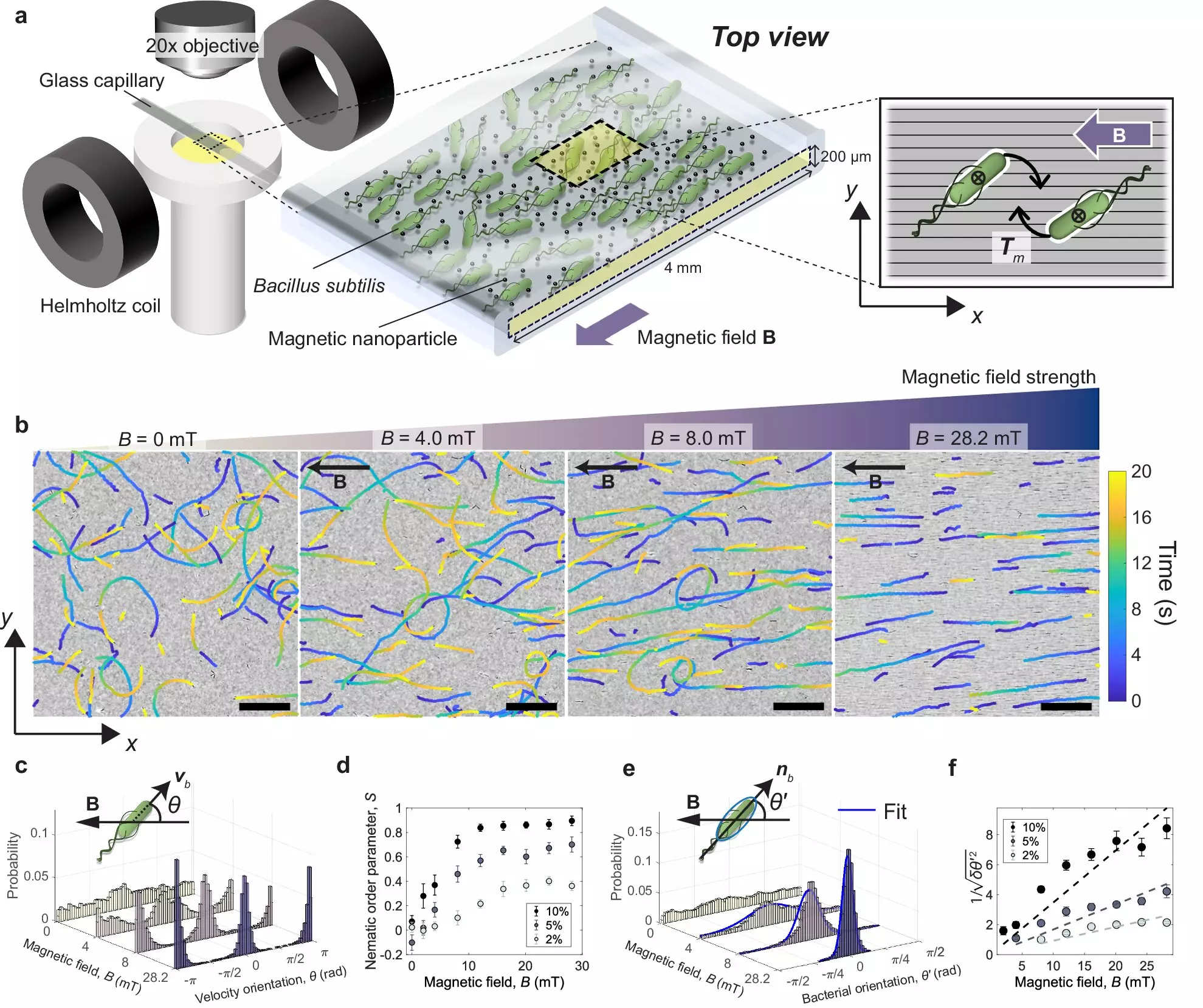A groundbreaking study conducted by researchers at Finland’s Aalto University has revealed a fascinating method of using magnets to align bacteria as they swim. This innovative approach not only provides a means to manipulate bacterial movement but also opens up opportunities for a wide range of research areas. The findings, published in the journal Communications Physics, shed light on the potential applications of this magnetic alignment technique in fields such as complex materials, phase transitions, and condensed matter physics.
Unlike magnetotactic bacteria, which possess inherent magnetic properties, the rod-shaped Bacillus subtilis bacteria utilized in this study are non-magnetic. Instead, the researchers introduced millions of magnetic nanoparticles into a liquid along with the bacteria. When magnets are activated to create a magnetic field, the bacteria are compelled to align themselves with the field’s direction. This alignment occurs because the most energy-efficient configuration for the non-magnetic bacteria is to have their rod-shaped bodies oriented in parallel with the magnetic field.
The researchers observed that the strength of the magnetic field directly influences the alignment of the bacteria. As the magnetic field intensity increases, the degree of alignment among the bacteria improves, ultimately leading to nearly perfect rows of swimming bacteria. Furthermore, the population density of bacteria in the liquid also plays a significant role in the alignment process. Higher bacterial concentrations create turbulence-like effects in the liquid that require stronger magnetic fields to overcome.
The emergence of active turbulence in dense bacterial suspensions poses a unique challenge and opportunity for further research. This phenomenon, driven by the collective behaviors of individual swimming units such as bacteria, sperm, or epithelial cells, offers insights into the dynamics of active matter physics. The researchers emphasize the distinction between active turbulence and conventional turbulence encountered in other contexts, highlighting the potential for leveraging bacterial suspensions as a tool for studying active matter.
Applications in Active Matter Research
Beyond the immediate implications for controlling bacterial movement, the study underscores the broader implications of manipulating active matter. By harnessing the ability to fine-tune bacterial alignments and turbulent flows, researchers can delve deeper into the properties of dynamic materials where complex patterns arise from individual components’ interactions. This research opens doors to diverse applications, including self-sustaining materials, microrobotics, biological engines for energy harvesting, and targeted drug delivery on a microscopic scale.
Looking ahead, the research team plans to explore the effects of dynamic magnetic fields on bacterial alignment, possibly incorporating rotating magnetic fields into their experiments. This further investigation will provide valuable insights into the behavior of bacteria under varied magnetic conditions, paving the way for enhanced control and manipulation of bacterial motion. The versatility of the magnetic alignment technique extends beyond bacterial systems, offering a promising avenue for advancing experimental studies of active matter across different domains.
The manipulation of bacterial movement through magnet-induced alignment represents a significant advancement in the field of active matter research. By gaining a deeper understanding of active turbulence and leveraging magnetic fields to control bacterial behavior, researchers stand to unlock new possibilities for innovative applications in materials science, biophysics, and beyond. The magnetic manipulation of bacteria unveils a realm of opportunities for exploring the dynamic behaviors of active matter and holds immense potential for driving future scientific discoveries and technological advancements.


Leave a Reply